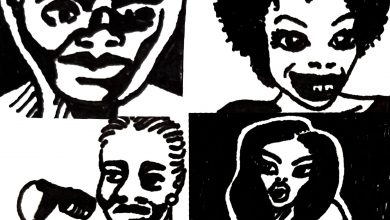Feminism 101: What is Cissexism?

Illustration by Sara Haas.
The legalization of gay marriage, visibility of stars like Caitlyn Jenner and Laverne Cox, and North Carolina bathroom bill fiasco have finally brought transgender issues into the mainstream American consciousness. Unsurprisingly, these events have spawned productive and not-so-productive conversations, revealing which people are open-minded and empathetic and which have rigid, bigoted opinions that render their company intolerable. But while most socially conscious people know blatant transphobia when they see it, the attitudes and behaviors that constitute cissexism can be more subtle and widespread, requiring mindfulness to overcome.
Cissexism is the conscious or unconscious reinforcement of the belief that there are only two genders, determined at birth by one’s genitals. This belief results in the privileging of cisgender people and oppression of transgender, non-binary, and intersex people.
Because the United States has a binary social structure, children may even have cissexism embedded in them before birth, when their gender is gleefully announced as soon as parents have an ultrasound revealing the baby’s genitals. Children are socialized to conform to their predetermined gender identity as soon as they are born, with boys receiving “masculine” toys such as firetrucks and girls receiving “feminine” toys such as dolls. This socialization continues into adolescence and beyond, neatly sorting cisgender folks into the order of society, while those whom the system fails — people whose assigned gender doesn’t match their internal experience of gender — are derided, ignored, or emotionally and physically violated. The refusal to honor the rights of transgender people to, like cisgender people, use the bathroom they are most comfortable with, is a classic example of cissexism.
Cissexism is so embedded in our collective psyche that it dominates our language. A common euphemism for penis is “manhood,” reflecting deeper ideas that one’s level of masculinity is directly related to the size of their penis. Courage, a trait that has traditionally (and incorrectly) been masculine-coded, is referred to as “having balls.” Menstrual products are referred to as “feminine-hygiene” products, as if only female-identified people have periods. Genderqueer and non-binary individuals who prefer pronouns other than “he/him” or “she/her” are commonly misgendered by those who feel that the singular use of “they” or other pronouns is grammatically incorrect.
Cissexism also shows up in appearance-policing, which is based on the idea that men and women are supposed to look a certain way. Those whose appearances don’t neatly fit into the predetermined box of what men or women “look like” have a harder time getting their gender identities taken seriously and experience more discrimination than those whose appearance fits into conventional norms. This places low-income trans people who can’t afford gender affirming surgery at a greater disadvantage, as well as trans people who choose not to buy into binarist rules of appearance and non-binary or genderqueer people whose appearance may reflect their personal experience of gender.
Cissexism can be found within activist communities, especially certain feminist circles. An extreme example are TERFs, or trans-exclusionary radical feminists, who completely deny the validity of trans identities. Older feminists have commonly used vaginal imagery to celebrate women, a trend that, while fading, has not gone completely out of vogue. Many feminists nominally celebrate gender diversity, but fail to consider transgender points of view when discussing topics such as reproductive rights and rape culture. Intersectional feminists seek to improve in this area, creating a safe environment for people of all genders to support each other and rally for equality.
Cisgender people will never fully understand the transgender experience, but this does not excuse negation of trans identities, nor does it excuse continued ignorance. It is everybody’s responsibility to make this planet safe and welcoming for others, and this requires ongoing education and refinement. Conversations with transgender people are a great way to gain greater understanding and build friendships — but it is important to remember that trans people are not walking gender-studies textbooks, nor should they have to be. Websites like Everyday Feminism are full of information and personal narratives from people with a variety of gender identities. Education and companionship will help us to celebrate, rather than fear, the nuance that characterizes gender, and life.




